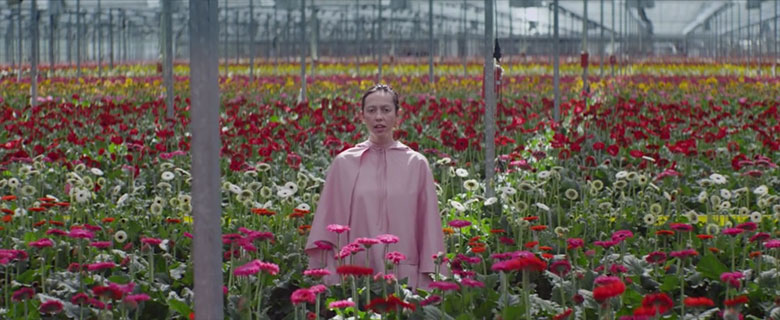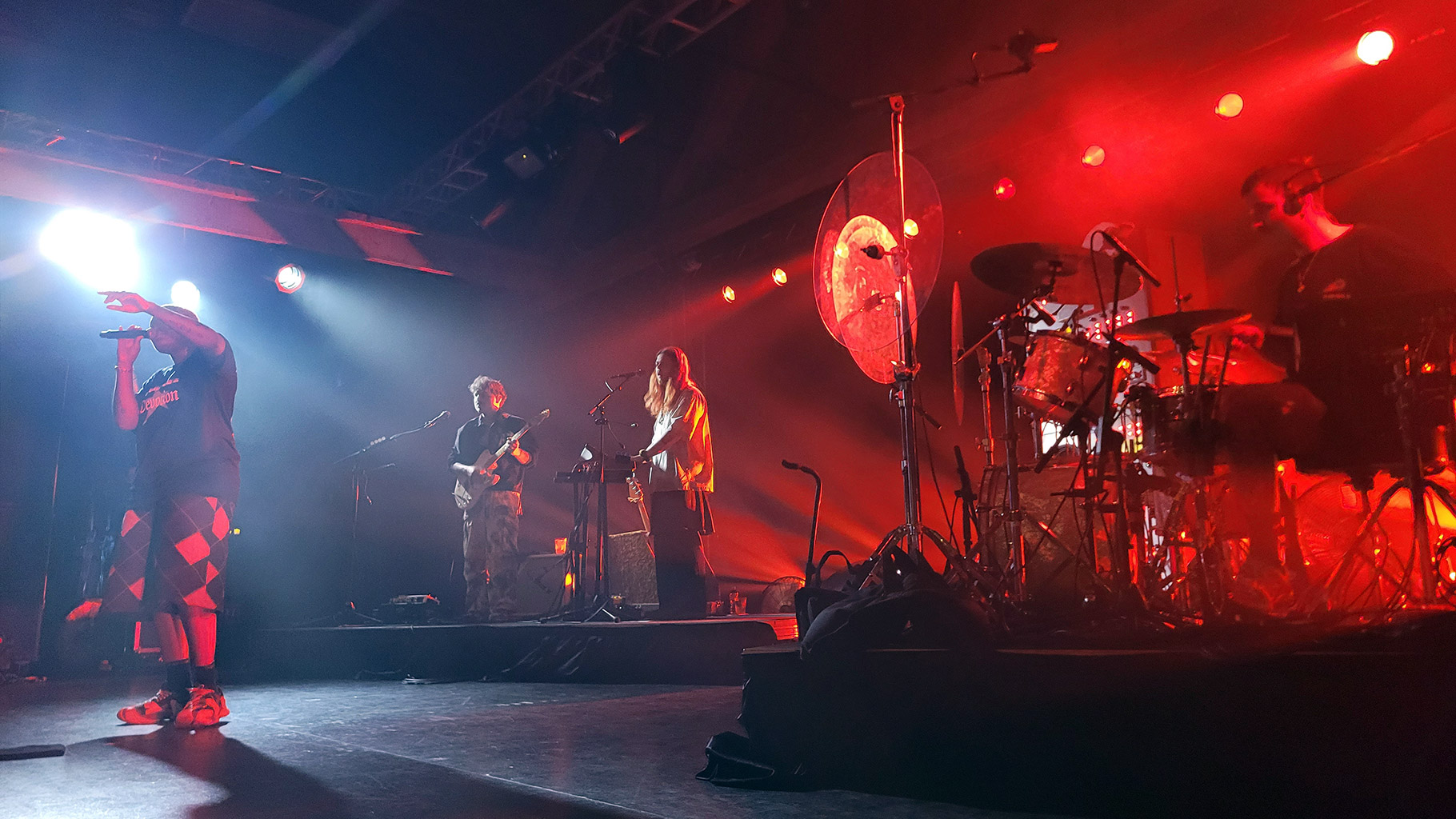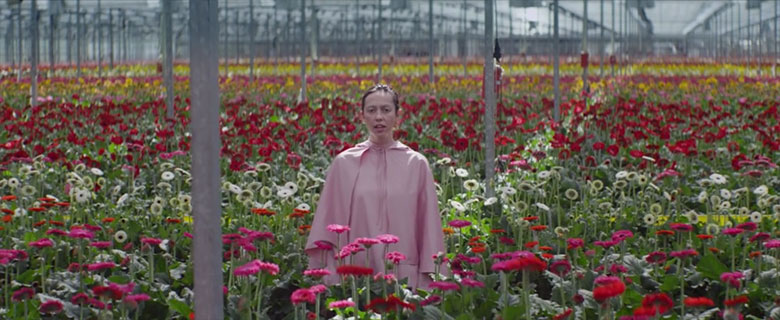
How did this collaboration first come to fruition, and how much back-and-forth was there throughout the creative process?
Kevan was our saving our grace. We had gone back and forth with a number of directors who got on board and then rather quickly got off. We found that visually the subject matter discussed in “Miniskirt” is really difficult to portray without hitting people over the head with ‘a message’ or a series of cliché’d examples. Kevan and I went back and forth for weeks about how to portray the liberation and the cultural equality struggle that females face. Kevan from the beginning was really interested in displaying the control of feminine through our control over nature.
Can you tell me about the decision to work with/as a male director on a feminist track? What kind of unique perspective do you think that may have brought?
Kevan just had the best ideas. And he is a soft and compassionate man. I was a little nervous at first. I thought “I have to work with a woman; only a woman would understand.” But I was extremely clear with what I wanted, and made sure Kevan understood me. I had a very prominent role in the decisions made for this video, so I was the ‘female’ element of the video. It was good to work with a man, because this song isn’t just for women, it’s for men as well. One of my favourite things as of late is when I see men in the audience singing all the lyrics to “Miniskirt”. My heart explodes !

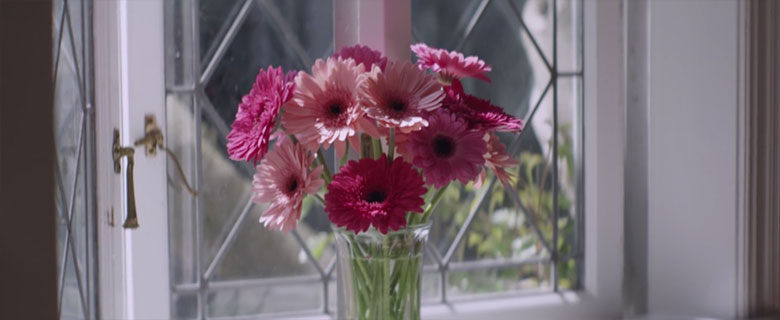
Kevan Funk was quoted as saying, “I began very interested in the idea of commodification and control of femininity in a patriarchal societal construct, and liberation from that restraint.” Can you tell me a little bit about the visual cues, media content, or news stories that influenced and inspired these themes?
One really important element of this video was that my experience was to in no way be softened, so that it looked more pleasant on screen or whatever. We wanted really raw emotion. Often times we want beautiful shots of women who hurt; we want the female to still be beautiful when she is experiencing pain or intense feeling. We really wanted to break that down on screen, so if it was a bit awkward, or overwhelming, we just went with it. We were very thoughtful with my positioning onscreen, I wanted nothing to do with belittlement, or anything that would suggest that.
Though the song deals with intense subject matter, we didn’t want the video to feel dark. It’s a moment of liberation. So we chose a lot of bright locations, a lot of bright colours, especially in the styling.
We found the human exploitation of nature to display the ‘commodification and control of femininity’. Symbolically, the female has been related to a ‘flower’. We wanted to show the processing and packaging of flowers to display what the female goes through culturally, how she is expected to be.
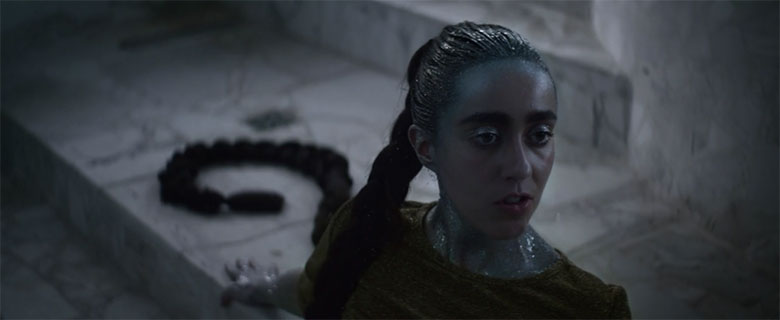
Fashion is obviously referenced through the title and there are a few fashionable points in the video which stood out to me – such as the red lipstick and the super glam high-fashion imagery towards the beginning. What guided the wardrobe choices?
Fashion plays a huge role in the song. The idea that when a woman decides to dress in a sexy way, she is ‘asking for it’ [or] that her choice of wear permits certain male behaviour, is just ridiculous to me. Also, culturally, there is the expectation that when a woman wears certain items of clothing, she is expected to act a certain way. I wanted to wear clothing that made me feel sexy, without the demands of needing to act that way. I could scream and shout in a miniskirt, or in a beautiful flower dress, challenging the roles that those items often instill in women to play out.
Flowers play a huge role as a symbolic prop. How and why the greenhouse / flower farm setting chosen, and how easy or difficult was it to shoot in?
The greenhouse displays the control that humans have over the natural, in this case the flower. We wanted it to symbolize the cultural and societal expectations and controls that are placed on women.
It was quite an easy location to shoot in, but it wasn’t easy to get access to. Kevan worked really hard to convince the owners to let us shoot there. We said it was an piece on the poetry behind flowers and that we were doing it for our final project for art school. We had to twist the truth a bit !
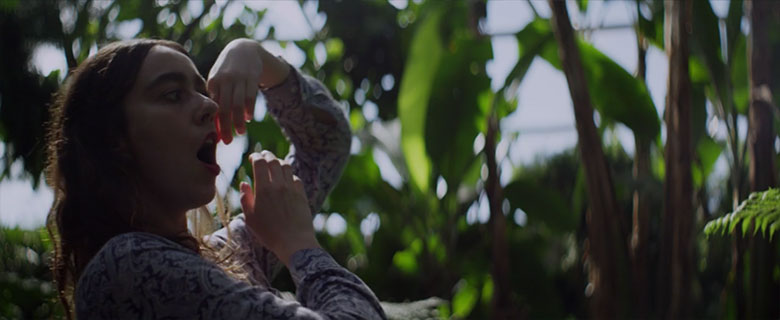
How did the decision come about to incorporate dance and movement into the second part of this piece?
In the first half of the video, we wanted to show the female as objectified — the rigidity that is often felt from expectation. So I don’t really move that much. I tried to be more like an object in most of the shots. There is the ‘walking flower shot’ — the narrator in the video, and in all the other ones, I am just still, posed. We wanted the second half to explore movement and a feeling of freedom, as a strong contrast to the first half. I danced for many years of my life, and it just felt right really great to return to that openness in movement.
There is one scene with a number of male onlookers in the background. It is a departure from the rest of the shots, and for that reason, stands out despite it subtle incorporation of other people. Can you talk about these scenes?
This just happened completely off-chance. We were shooting in the forest, and all of a sudden all these men appeared and started jumping off from a cliff behind me. They were watching me move for awhile, I kind of felt like I was on display, so we broke the silence and asked if we could film them jumping, and made them a part of the experience. We just stumbled upon this display of masculinity. We wanted to portray it, and like the rest of the video, it just came to us by chance. A lot of the shots in this video weren’t planned, we had a lot of concepts we wanted to portray and we found that through being open the moments would often present themselves.
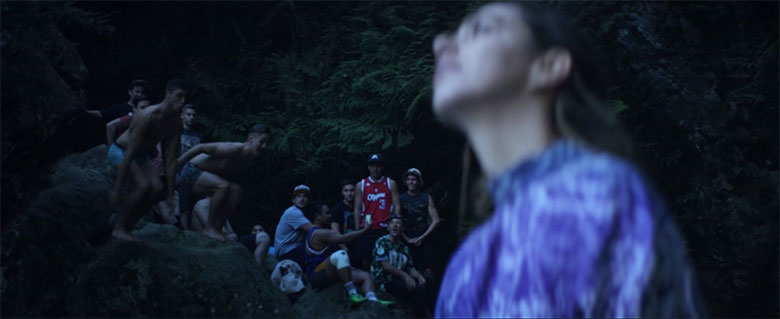
BRAIDS – “Miniskirt” Music Video Credits
Directed by Kevan Funk
Cinematography by Kelly Jeffrey
———————————————-
Styling: Mia Fiddis, Mila Franovic
Make-Up: Frida Norrman, Ksenia Ogolikhina , Paula Lanzador
Editor: Kevan Funk
Camera Assistant & Stills: Grady Mitchell
Grip: Philip Prajoux, Chris Tobiesen, Bjorn Hermannes
Colourist: Zach Cox
Online Editor: Andres Landau
Production Company: Everything All At Once
Post Production Services: Victory Social Club
Special Thanks: Robin Léveillé, Norm Li, Patrick Campbell, Bernie Yao, Benjamin Loeb, Ken Tsui, Tyler Funk, Caitlin Byrnes, Pitchougina, Renata Morales, NJ Transit
Ω

